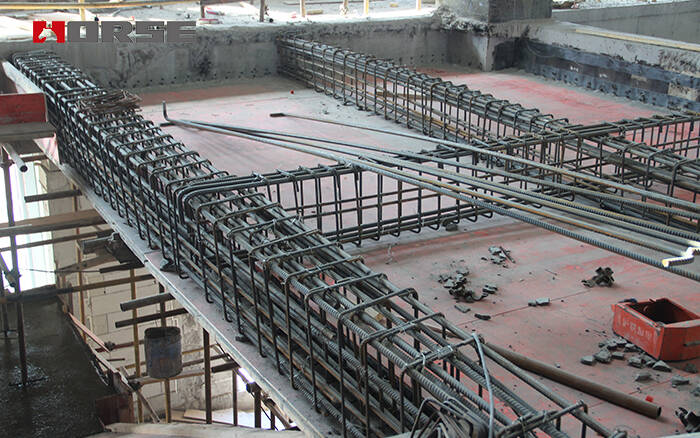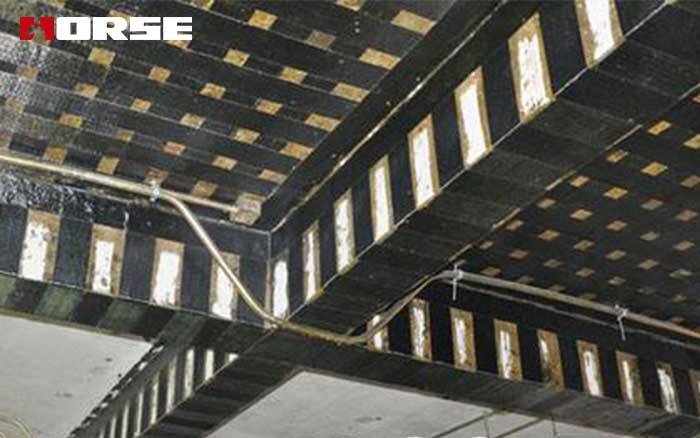Solutions
Horse Construction offers full range of structural strengthening materials with technical supports, documentation supports, products supports, project supports.
Structural Reinforcement Materials For Existing Buildings Are Crucial

With the continuous improvement of China's economic development and urbanization rate, there are fewer and fewer new urban buildings, and urban renewal of existing buildings has become the dominant area in the construction field. The purpose of urban renewal is to redevelop and prosper the buildings and environment in urban decline areas through continuous construction such as renovation and upgrading.
Urban Renewal Solves Safety Hazards in Old Houses
The safety of old houses is an unavoidable and first issue to be solved in urban renewal, and housing safety is a prerequisite for urban renewal. Some of the old houses have reached or even exceeded the design service life, some have defects such as deformation and cracks under static load, and some houses at the urban and rural junction have not undergone formal design. A few houses still have the phenomenon of randomly removing and modifying structural components.
In addition, according to the fifth generation of "China's Seismic Ground Motion Parameter Zoning Map" implemented in 2016, more than 30% of the seismic ground motion parameters of districts and counties in China have changed, and the seismic fortification intensity has been increased to varying degrees. The seismic safety hazards of buildings designed and constructed according to previously lower seismic fortification intensity are also issues that should be addressed in urban renewal.
In urban renewal, if there are the following situations, it is necessary to conduct safety and seismic evaluations of the houses, and reinforce them according to the evaluation conclusions: first, old houses built before 1980; Second, urban self built housing; The third is to change the use or increase the load of the house; The fourth is to modify the main structure or structural components of the house; Fifth, houses with defects under static load; Buildings with increased seismic fortification intensity or seismic fortification category; Seventh, other houses with safety issues found in use.
Strengthening methods of existing buildings
There are many ways to strengthen buildings, including direct component reinforcement and system reinforcement. The direct reinforcement method of components is mainly used for static reinforcement (excluding seismic effects), and can also be used for strengthening seismic components, including the method of increasing section, pasting steel plates or carbon fiber, steel cladding, and plate wall reinforcement; System reinforcement is mainly used for seismic reinforcement, including adding or changing the location of structural components, changing the structural system method, and seismic isolation and strengthening methods.
If the house is statically safe, but the seismic bearing capacity is insufficient, the reinforcement method is relatively flexible. Instead of entering the house, reinforcement can only be carried out on the periphery of the house (such as adding plate walls on the periphery, adding seismic or shock absorbing components on the exterior, and seismic isolation reinforcement). This non household reinforcement method is very suitable for residential buildings, with the advantage that it does not require relocation, enables reinforcement to be implemented, does not affect the usable area of the house, and is easily acceptable to residents.
If the static bearing capacity of the building is insufficient, reinforcement needs to be entered into the house. The reinforcement process can have an impact on the lives of residents, and after the reinforcement is completed, it will slightly affect the usable area (due to the increase in the cross-section of vertical components due to reinforcement), which is also one of the reasons for the difficulty in implementing the reinforcement of old residential buildings.

Requirements for reinforcement materials
The materials used for the reinforcement of existing buildings include concrete, steel bars, mortar, fiber composite materials, steel plates, polymer mortar, structural adhesives, and stainless steel strands, which are still somewhat different from those used for new buildings.
When concrete is used to increase the cross-section for reconstruction, there are requirements for the particle size of its coarse aggregate, and fine aggregate concrete is relatively more used; If it is necessary to consider the stress hysteresis effect of the project, it is necessary to use micro-expansive concrete.
Fiber composite materials have the characteristics of light weight and convenient construction, so they are widely used in reinforcement and reconstruction. They must strictly comply with the requirements of relevant standards for safety performance indicators such as tensile strength, elastic model, and bond strength to play their due role and ensure reinforcement effectiveness.
Structural adhesives are most widely used in reinforcement and reconstruction. Reinforcements such as planting steel, bonding steel, and pasting fiber materials require structural reinforcement adhesives of reliable quality as adhesives. Relevant standards specify safety performance indicators such as shear strength and bonding strength of structural adhesives used on different substrates (such as concrete, steel, wood, and masonry).
The engineering vibration reduction and isolation reinforcement mainly adopts various dampers, isolation pads, anti buckling supports, etc., with stricter requirements for various performance indicators such as steel and rubber used to ensure the effect of vibration reduction and isolation. For example, the steel used for anti buckling support requires good deformation performance, and it is first buckled when necessary, so as to dissipate energy and protect the main structural components from damage or slight damage.
Reinforce and transform according to the capital construction procedures according to laws and regulations
For the reinforcement and renovation of existing buildings in the context of urban renewal, it is strictly prohibited to dismantle or modify structural components without authorization. In cases involving the modification of structural components, it is necessary to seek a formal design unit for building renovation and reinforcement design. All parties involved in the construction, such as construction, design, appraisal, and construction supervision, must carry out their work in accordance with the basic construction procedures, laws, and regulations.
The construction unit shall entrust the appraisal, renovation design, construction, supervision, and survey of the house to a unit with corresponding qualifications in accordance with relevant regulations. When issuing the appraisal report, the appraisal unit must fully understand, investigate, and inspect the appraised object. If there are no drawings, on-site investigation should be conducted, and the structural layout plan should be supplemented to ensure that each appraisal report truly reflects the actual safety situation of the house.
The design unit should design in accordance with relevant national standards. When encountering situations such as changing structural components, increasing loads, and changing functions, it is necessary to remind the construction party to conduct house appraisal.
The construction unit must ensure that the construction is carried out in accordance with the drawings, and the basis for construction is the official construction drawings provided by the construction party (owner) and signed and sealed by a qualified design unit. If any discrepancies are found on the site during the housing renovation construction, they must be raised with the relevant parties, and the construction can be continued after the problems are resolved.
The supervision unit shall do a good job in project quality control, timely propose and require rectification if any problems are found, until they meet the requirements.
The seismic reinforcement of existing buildings is difficult due to various objective constraints. Urban renewal revitalizes urban decline areas. We need to ensure housing safety, truly improve the city's ability to withstand various disasters, and build a resilient city.
You can find anything here you are in need of, have a trust trying on these products, you will find the big difference after that.

High strength carbon fiber reinforced polymer (CFRP) strip / laminate / plate for structural strengthening and concrete repair

High strength, unidirectional carbon fiber fabric pre-saturated to form a carbon fiber reinforced polymer (CFRP) fabric used to strengthen structural concrete elements.

High strength, unidirectional carbon fiber sheet pre-saturated to form a carbon fiber reinforced polymer (CFRP) sheet used to strengthen structural concrete elements.